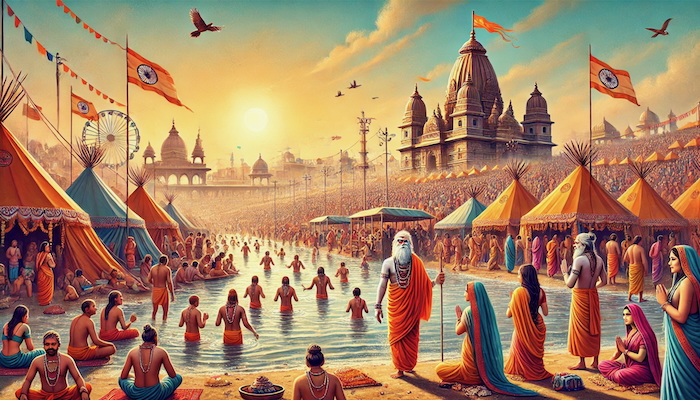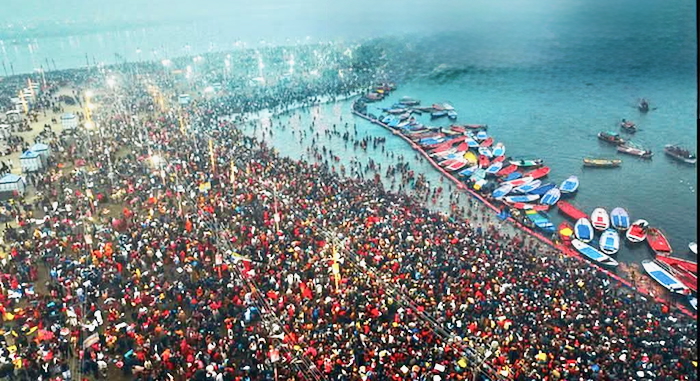Over the next month, Prayag Kumbh Mela will be the world’s largest peaceful congregation of people.

Prayag Kumbh Mela: Just how big is it?
JANUARY 13 to FEBRUARY 26—This once-every-144-years pilgrimage festival—often called “Prayag Kumbh Mela” to distinguish its special location in Prayagraj among other “smaller” Kumbh Melas in other places—already has become the “world’s largest religious gathering.”
Even more grandly, experts now have officially declared it: “the world’s largest peaceful gathering of people.”
The attendance—estimated at already having drawn more than 100 million people—is expected to total visits by more than 450 million by the time the festival wraps up in the last week of February.
To put that in perspective—it’s more than 10 times the crowds claimed to have attended the largest Muslim pilgrimages in history!
The largest Christian gathering on record is the 1995 appearance by Pope John Paul II at a World Youth Day in the Philippines that drew more than 5 million people.
The only sporting events that rank on these global “largest event” lists are several parades honoring beloved sports teams’ victories that, in some cities, drew crowds lining parade routes numbering in the 5 million range.
In music, a 1994 Rod Stewart concert in Rio de Janero drew more than 4 million—but even enormous concerts have rarely broken the 1 million mark.
Journalists struggle to describe the significance
The Guardian has one of the most often-cited reports about this sacred festival,
The Times of India also has a helpful overview, which reports in part:
Kumbh Mela is not just a festival; it’s a phenomenon where mythology, spirituality, and humanity collide in a spectacular show of faith. … The main attraction of the Kumbh Mela is the holy dip. … Devotees believe this act washes away sins and grants liberation from the cycle of life and death. … It transcends religion. It’s a reminder of India’s timeless heritage.
Another challenge for journalists is explaining why this particular Kumbh Mela festival is more than a once-in-a-lifetime event. In fact, it’s a “first-in-generations” event. The answer is so complex that that it is rarely detailed in news reports. The calculation is based on judgments about celestial alignments—including the position of Jupiter and the moon and the sun—as determined by Hindu scholars and their readings of scripture. Apparently, the history of tracking these cycles goes back many centuries, but gaps do exist in that record. So, accurately explaining why this event is the most important Kumbh Mela “in centuries” is difficult for journalists. The fact is: Hundreds of millions of Hindus believe it is this rare—once in 144 years—and are demonstrating that belief by showing up in Prayagraj.
The Indian Express staff took a stab at explaining the cycles for its readers, however, this report also is full of qualifying phrases and rests mainly on this more general assumption: “The answers, as in many questions about Hinduism, lie in a mixture of myths, history, and the enduring faith of an ancient people, trusting as much in the munificence of invisible deities as in tangible life-givers like rivers.”
And the challenge of explaining the festival’s significance is even more complex than that! Journalists reporting for many newspapers, magazines and broadcast outlets also are struggling to accurately describe the political climate in which this historic celebration of India’s Hindu heritage occurs. This is an era when the Hindu minority holding power across India has been sparking global controversy for oppression of religious minorities.
Journalists even find it hard to “see”
The astonishing numbers of people crowding around this confluence of sacred rivers in northern India are almost impossible for journalists to photograph, despite the widespread use of camera-drones. That’s because these crowds are so vast and cover so much ground that people begin to look indistinguishable as aerial photographs are taken.

